The Integrated Pest Management approach is sustainable for maintaining beautiful landscapes while minimizing the use of harmful chemicals. In this blog, we’ll explore IPM strategies, which are essential for eco-friendly landscaping. By using scientific methods, we can tackle pests and diseases effectively. Let’s delve into the world of IPM, where science meets sustainability, and discover how to achieve a lush and healthy garden.
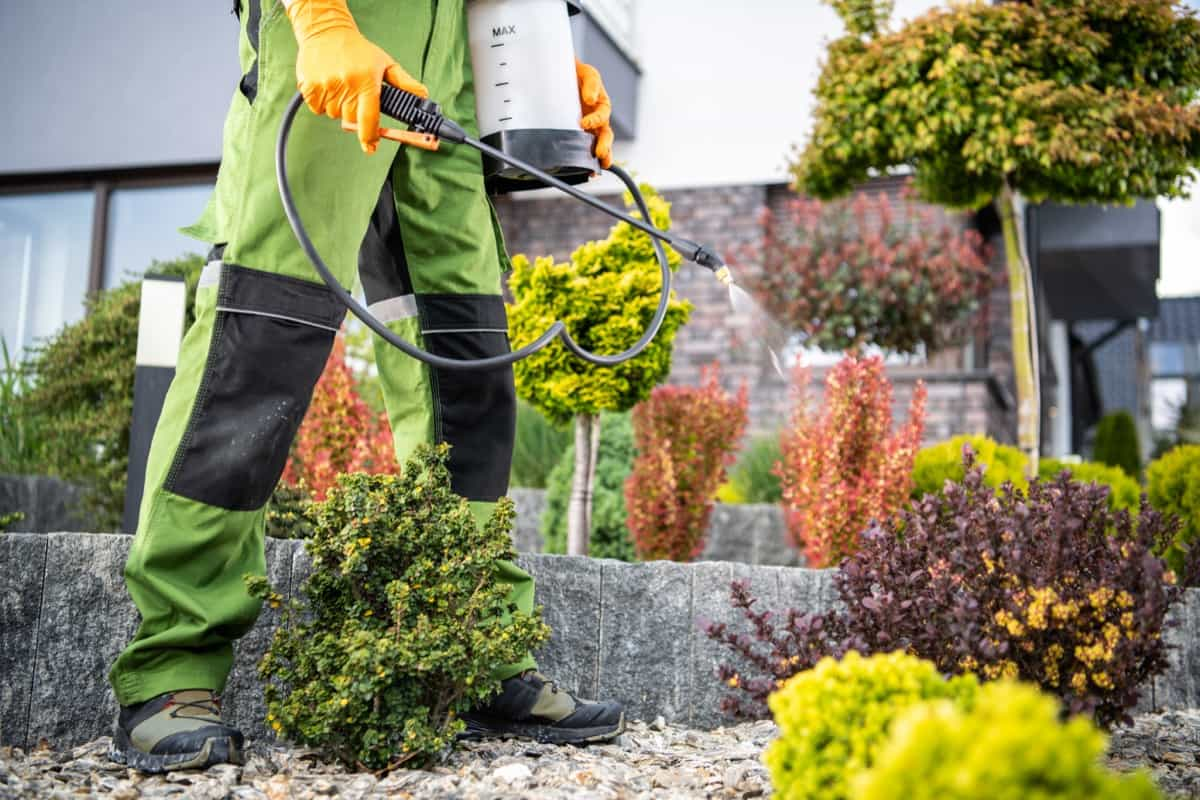
Integrated Pest Management in Landscaping
What is Integrated Pest Management in Landscaping?
Integrated Pest Management (IPM) in landscaping is a comprehensive, environmentally responsible approach to pest control. It combines various strategies to manage pests while minimizing the impact on the environment. IPM integrates scientific research and monitoring to identify pest threats accurately.
Rather than relying solely on chemical treatments, it employs a range of techniques like biological controls (using natural predators), cultural practices (altering planting or maintenance techniques), and physical controls (like traps). By understanding the pest’s life cycle and behavior, IPM aims to prevent or manage pest issues with minimal pesticide use.
Integrated Pest Management: A Holistic Approach to Landscaping
Integrated Pest Management (IPM) offers a strategy for managing pests in landscaping while prioritizing sustainability. It combines various techniques, including biological controls, cultural practices, and physical controls. By understanding the pests’ life cycles and behaviors, IPM aims to prevent or manage pest problems with minimal pesticide use.
The Importance of Integrated Pest Management in Sustainable Landscaping
IPM helps to reduce the use of pesticides and other harmful chemicals and to promote the health and diversity of plants, animals, and soil. IPM involves:
- Identifying the pests and their natural enemies.
- Monitoring their populations and damage.
- Applying cultural, biological, mechanical, and chemical methods prevents or controls them.
In case you missed it: Brackishwater Aquaculture-based Integrated Farming System: A Sustainable Way to Produce Food and Income
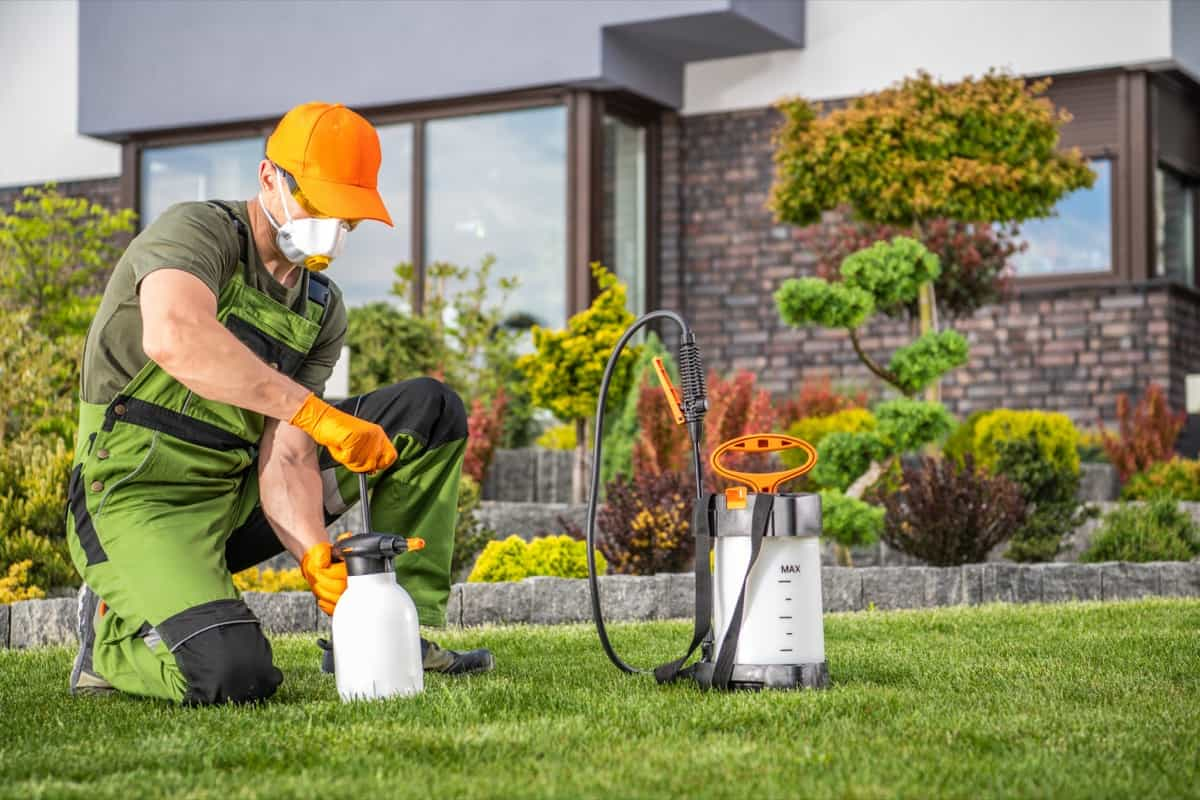
Key Components of Integrated Pest Management (IPM) for Landscaping
Pest Identification
This is the foundation of effective pest management. Accurate identification is essential because different pests have different behaviors and vulnerabilities. By knowing the pest’s identity, you can tailor your control strategies to address it specifically. For example, if you’re dealing with chewing pests like beetles or caterpillars, they physically consume plant material, leading to characteristic damage such as holes in leaves.
On the other hand, pests like aphids, lace bugs, or spider mites cause piercing-sucking damage, leaving brown or yellow speckling on leaf surfaces. Understanding the pest’s biology and behavior is critical for the next steps in the IPM framework.
Monitoring
Once you’ve identified the pest, monitoring involves regular inspections of your landscape to track the pest’s activity and location. It helps you keep tabs on what’s happening in your ecosystem. Common monitoring methods include visual inspections, which may require examining the undersides of leaves with a hand lens to find signs of pest feeding. Thrashing plant material onto a white surface can dislodge insects for easier identification and counting.
Additionally, various trapping devices can be used to lure insects for monitoring purposes, although these are not control measures. Monitoring helps you pinpoint areas where pests are a concern and allows you to watch for pest activity throughout the year. By tracking temperature, humidity, and rainfall, you can predict pest activity because these environmental factors directly affect insects.
Decision Making
Making the right decision about when and how to intervene is a critical but challenging aspect of IPM. You need to determine the level of pest infestation or damage that warrants action. For ornamental landscapes, any damage may be unacceptable, but this can vary depending on the type of pest, the plant species involved, the landscape’s purpose, and the cost of control measures.
To make these decisions, you can rely on damage and aesthetic thresholds. Timing is also vital since the effectiveness of control measures often depends on the pest’s life stage. For example, treating immature scale insects in the crawler stage is more effective than treating adults.
Implementing Integrated Pest Management Techniques for Effective Landscape Maintenance
To effectively maintain a sustainable landscape, implementing IPM techniques is crucial. This involves precise pest identification and understanding the causes of foliage injury, including physical damage, plant diseases, arthropod pests, slugs, snails, and vertebrates. Regular inspections for arthropods, recognition of feeding patterns, and knowledge of the different types of mouthparts insects have for feeding are essential aspects of IPM.
In case you missed it: Exploring the Potential of Tuber Crops in Integrated Farming Systems: Maximizing Yields and Profit
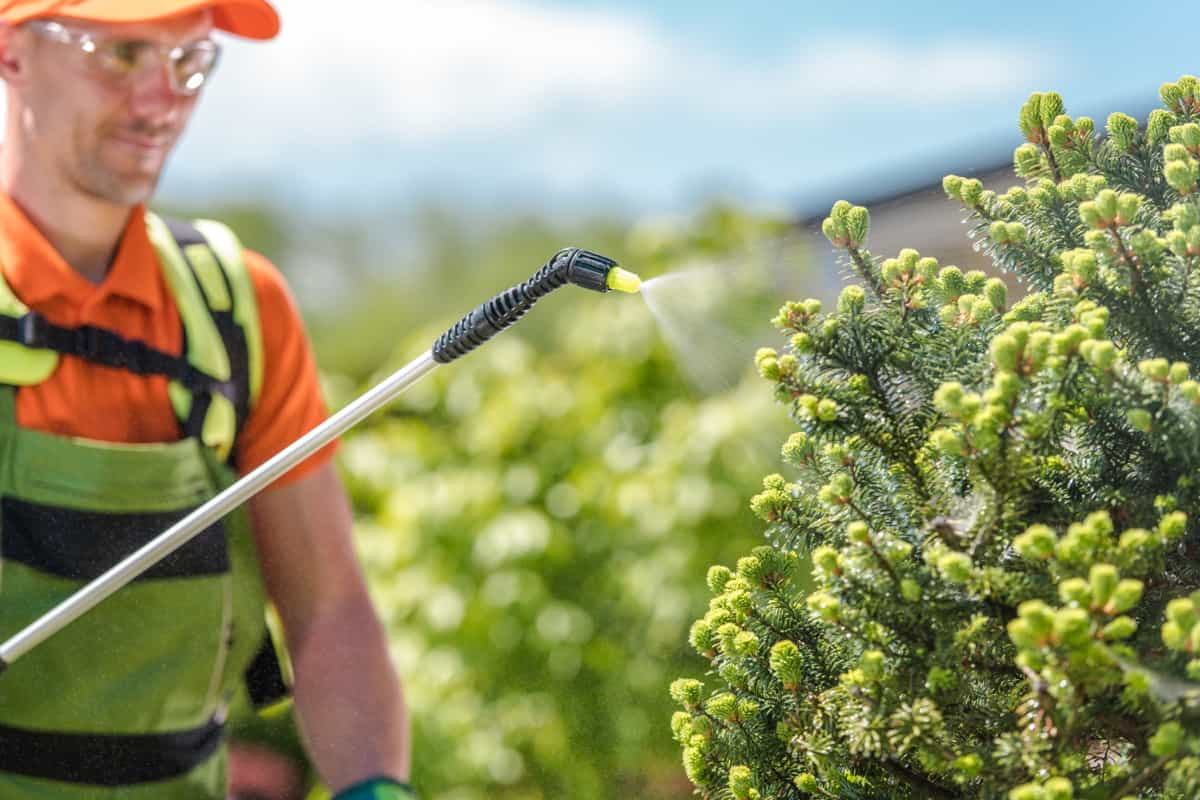
Chewing insects, like caterpillars, sawflies, grasshoppers, and beetles, remove plant tissue and often leave distinctive damage patterns. Leafminer flies create blister-like trails on leaves. Thrips, with their rasping mouthparts, cause tiny silver streaks. Sucking insects, such as aphids, whiteflies, mealybugs, and scales, feed on plant fluids and may transmit diseases. Non-insect arthropods, like spider mites, produce stippled damage and can create webbing around plants. Identifying these pests accurately is critical for targeted pest control.
Identifying Common Pests in Landscaping and Their Impact on Plants
One of the fundamental aspects of landscaping care is the precise identification of pests that can wreak havoc on your plants. A thorough understanding of the pest, its life cycle, and its behavior is vital for effective pest management. Accurate identification enables you to detect subtle changes within a group of pest species. For instance, consider the scenario where the chrysanthemum leafminer, Liriomyza trifolii, displaces leafminer species.
This shift can lead to significant challenges in controlling leafminer populations. Generalized pest identifications often lead to control problems. Take the example of beet armyworms on certain bedding plants like chrysanthemums. They may not respond to insecticides commonly effective against other armyworm species due to pesticide tolerance or resistance. Also, imidacloprid works well on soft scales like the Florida wax scale on hollies. Still, armored scales like the cycad aulacaspis scale need a different neonicotinoid called dinotefuran to be controlled.
Preventing Pest Infestations through Proper Landscape Design and Maintenance
- Choose plants that are native, resistant, and suitable for your climate and soil conditions.
- Avoid overwatering, overfertilizing, or overcrowding your plants, which can attract pests and diseases.
- Prune, mulch, and weed your plants regularly to remove dead or diseased parts and improve air circulation.
- Inspect plants for signs of pests or damage and treat them promptly with natural or organic methods.
- Keep your lawn mowed, edged, and aerated to discourage pests from hiding or nesting in the grass.
Using Biological Control Agents in Integrated Pest Management for Landscaping
- Biological control is a valuable approach to integrated pest management (IPM) for landscaping.
- Natural enemies in undisturbed habitats help regulate pest populations and prevent damage.
- Increasing plant diversity in the landscape enhances biological control by attracting more natural enemies.
- Purchasing and releasing beneficial insects can supplement natural enemy populations, especially in enclosed areas.
- Various natural enemies like predatory bugs, ground beetles, ants, vespid wasps, spiders, lady beetles, lacebugs, and wasps effectively control a wide range of landscape pests.
- Biological control is a sustainable and eco-friendly method to maintain pest populations in check, reducing the need for additional control measures.
In case you missed it: Backyard Landscaping Ideas in India: For Small and Large Areas with Low-maintenance and Cheap Tips
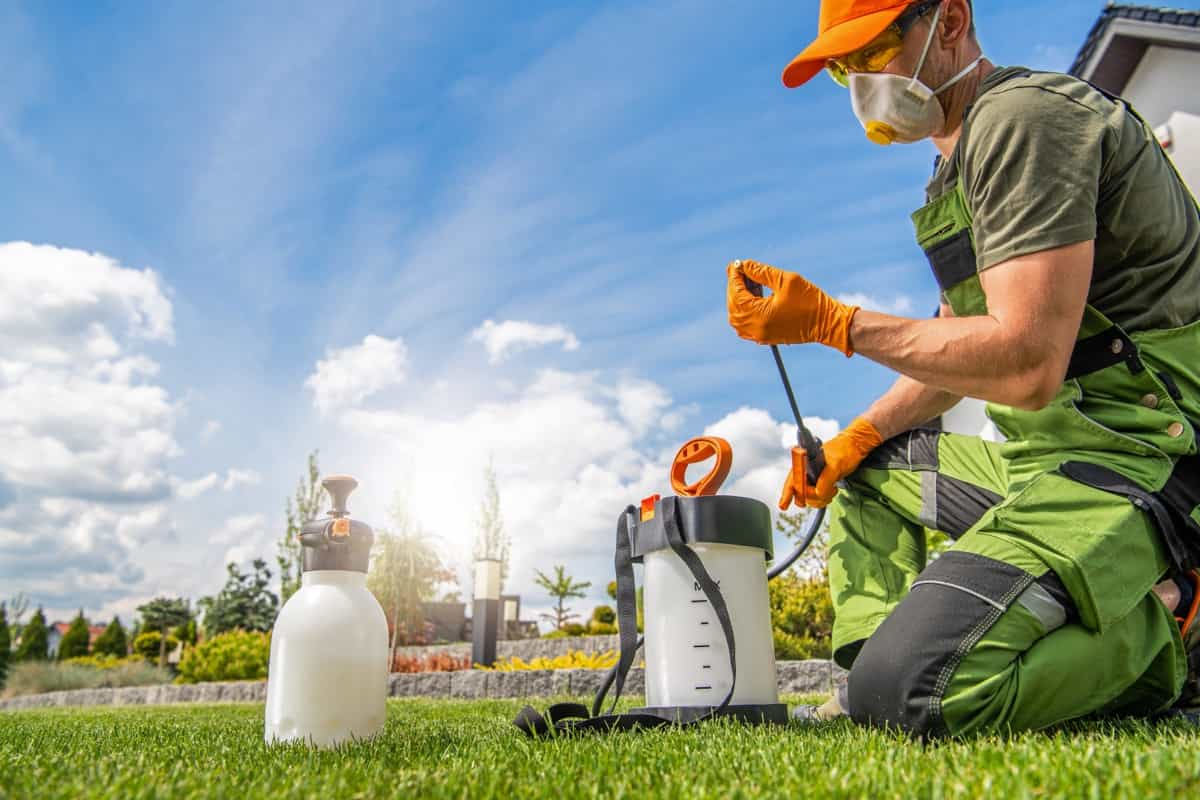
Cultural Practices for Pest Prevention and Control in Landscaping
Cultural practices are crucial in preventing and controlling pests in landscaping. They involve plant care, such as selecting the right planting site, choosing suitable plant varieties, and managing water and nutrients. Proper fertilization and watering practices reduce plant stress, a key factor in pest vulnerability. Native plants provide the best protection but can also create pest-free and insect-friendly landscapes.
Understanding the effect of environmental elements, such as shelter and food resources, on pest populations is essential. Manipulating abiotic aspects like light, heat, and humidity can affect plant health and influence pest problems. Incorporating biotic factors like food sources and plant relationships can also impact pest populations. By implementing these cultural practices, you can effectively prevent and control pests while promoting a healthy landscape.
Monitoring Techniques for Early Detection of Pests in Landscaped Areas
- Automatic Traps: Use sensors to capture insect pests using infrared, audio, or image signals.
- Radar Technologies: Track flying pest migration patterns over large distances.
- Video Equipment: Record pest activity and behavior in the field.
- Thermal Infrared Imaging: Detect pests’ heat signatures in the dark.
- Chemiluminescent Tags: Mark and track pest movement at night.
- Global Navigation Satellite System (GNSS): Locate and monitor wildlife pest habitat and distribution.
- Echo-Sounding Detection: Measure the activity and density of larvae pests in water.
- In Situ Counts: Observe and count pests on plant canopies.
- Knock Down: Collect and count pests by removing them from crops.
- Netting: Use sweep nets to catch and sample hoppers, odonates, and grasshoppers.
- Pheromone Traps, Light Traps, Colored Sticky Traps, Pitfall Traps, and Suction Traps: Attract and capture pests based on chemical, visual, or tactile cues.
Chemical-Free Pest Control Methods for Sustainable Landscaping
Chemical-free pest control methods for sustainable landscaping include companion planting, biological control, cultural practices, mechanical and physical controls, and organic and natural pesticides. Planting plants that keep pests away or attract good bugs, adding living things like good bugs, changing the environment to keep pests away, using screens, traps, and fences as barriers, and using natural things like plant extracts, essential oils, minerals, baking soda, or diatomaceous earth are some of these methods. These methods aim to minimize environmental and human health impacts.
Utilizing Beneficial Insects as Natural Predators in Integrated Pest Management
Utilizing beneficial insects as natural predators in integrated pest management means using certain bugs that eat harmful pests to protect crops and plants. Some examples of beneficial insects are ladybugs, lacewings, and parasitic wasps. They can make and reduce the need for chemical pesticides and improve the environment’s health.
In case you missed it: Landscaping Rates Per Square Foot India: Estimation of Yard Work Cost for Small and Large Areas
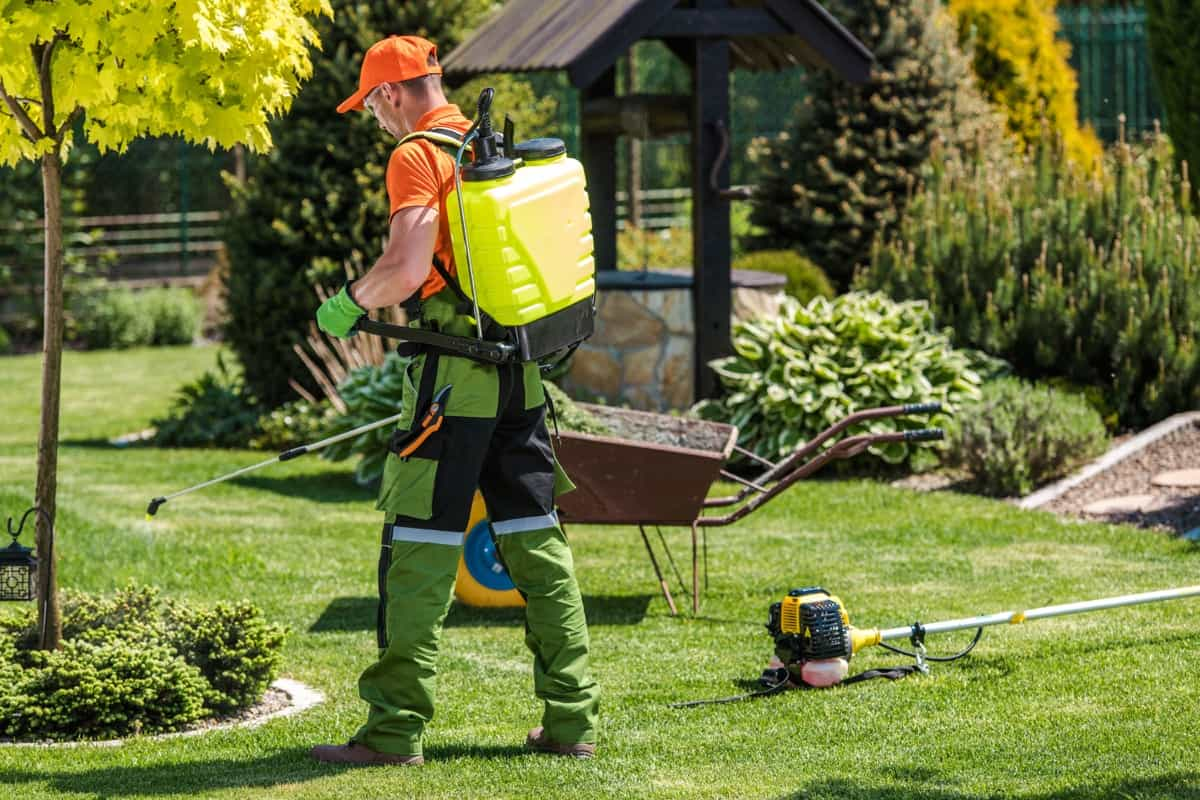
Integrating Physical Barriers and Traps for Pest Control in Landscaping
Mechanical control in landscaping offers an eco-friendly way to manage pests. It involves physically removing or blocking pests from plants. When insect populations are low, hand removal can be efficient. For instance, discarding turf clippings helps reduce cutworm populations by removing their egg masses deposited on grass tips. Insect trapping with pheromone lures or sticky traps is another effective method for monitoring and reducing flying insects.
If needed, removing infested plant material by pruning branches or taking off leaves can be a successful strategy. Mechanical control methods are beneficial because they don’t disrupt the ecosystem significantly. They’re particularly useful when pest numbers are manageable. These practices can help maintain a healthy and pest-resistant landscape without resorting to chemical solutions, making them a sustainable choice for pest management.
Developing an IPM Plan: Steps to Implement Integrated Pest Management in Landscaping
- Identify the pest and the plant it is affecting. Use pest identification guides or consult your local county Extension office for help. Different pests may require other control methods, so accurate identification is essential.
- Monitor the pest population and the plant health regularly. Use traps, visual inspections, or different ways to assess the pest level and the damage it causes. Record your observations and compare them with previous data.
- Decide on an action threshold. This is where the pest population or damage becomes unacceptable and requires intervention. The action threshold may vary depending on the type of plant, the location, the season, and the aesthetic or economic value of the landscape.
Choose an appropriate IPM practice. There are four main types of IPM practices: cultural, mechanical, biological, and chemical. Cultural practices involve modifying the environment or the plant to make it less favorable for pests. For example, choosing resistant varieties, adjusting irrigation or fertilization, or pruning or mulching. Mechanical practices involve physically removing or excluding pests from the plant.
For instance, hand-picking, trapping, netting, or mowing. Biological methods include using natural enemies or beneficial organisms to reduce pest populations. For example, releasing predators, parasites, or pathogens or enhancing their habitat. Chemical techniques involve using pesticides as a last resort when other methods are not effective or feasible. Choose pesticides that are selective, low-toxicity, and compatible with natural enemies. Follow label instructions and safety precautions carefully.
In case you missed it: Top 12 Front Yard Landscaping Ideas: Tips and Techniques for Beginners
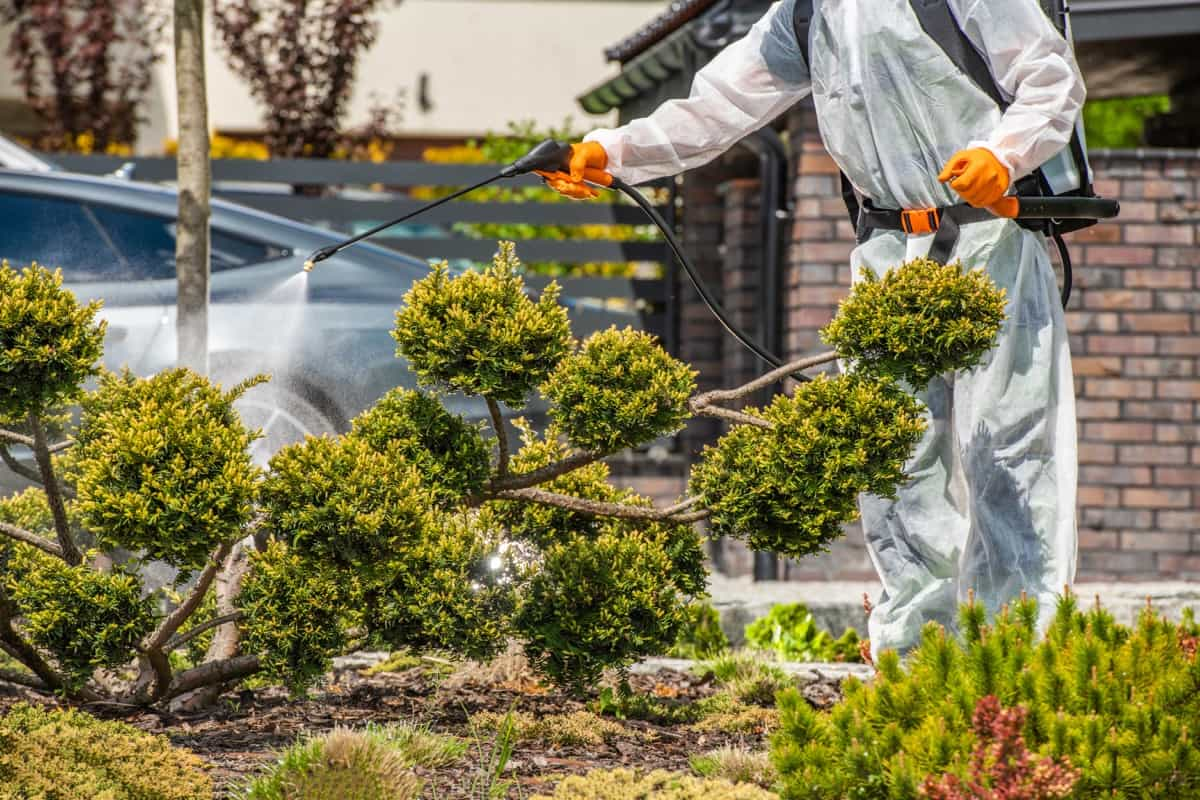
Evaluate the effectiveness of your IPM plan. Monitor the pest population and the plant health after applying an IPM practice. Compare the results with your action threshold and your previous data. Determine if your IPM practice was successful or if you need to adjust it or try a different one.
Conclusion
Integrated Pest Management is the key to maintaining a thriving and eco-friendly landscape. By identifying pests accurately, monitoring their activity, and making informed intervention decisions, you can safeguard your plants while minimizing environmental impact.
- Types of Pesticides Used in Agriculture: A Beginner’s Guide
- Economical Aquaculture: A Guide to Low-Budget Fish Farming
- 15 Common Planting Errors That Can Doom Your Fruit Trees
- How to Make Houseplants Bushy: Effective Tips and Ideas
- Innovative Strategies for Boosting Coconut Pollination and Yield
- Pollination Strategies for Maximum Pumpkin Yield
- The Complete Guide to Chicken Fattening: Strategies for Maximum Growth
- Natural Solutions for Tulip Problems: 100% Effective Remedies for Leaf and Bulb-Related Issues
- Revolutionizing Citrus Preservation: Towards a Healthier, Greener Future
- Natural Solutions for Peony Leaf and Flower Problems: 100% Effective Remedies
- Maximizing Profits with Avocado Contract Farming in India: A Comprehensive Guide
- Natural Solutions for Hydrangea Problems: 100% Effective Remedies for Leaf and Flowers
- The Ultimate Guide to Choosing the Perfect Foliage Friend: Bringing Life Indoors
- From Sunlight to Sustainability: 15 Ways to Use Solar Technology in Agriculture
- The Ultimate Guide to Dong Tao Chicken: Exploring from History to Raising
- The Eco-Friendly Makeover: How to Convert Your Unused Swimming Pool into a Fish Pond
- Mastering the Art of Delaware Chicken Farming: Essentials for Healthy Backyard Flocks
- 20 Best Homemade Fertilizers for Money Plant: DIY Recipes and Application Methods
- How to Craft a Comprehensive Free-Range Chicken Farming Business Plan
- Brighten Your Flock: Raising Easter Egger Chickens for Beauty and Bounty
- How to Optimize Your Poultry Egg Farm Business Plan with These Strategies
- Subsidy for Spirulina Cultivation: How Indian Government Schemes Encouraging Spirulina Farmers
- Ultimate Guide to Raising Dominique Chickens: Breeding, Feeding, Egg-Production, and Care
- Mastering the Art of Raising Jersey Giant Chickens: Care, Feeding, and More
- Ultimate Guide to Raising Legbar Chickens: Breeding, Farming Practices, Diet, Egg-Production
- How to Raise Welsummer Chickens: A Comprehensive Guide for Beginners
- How to Protect Indoor Plants in Winter: A Comprehensive Guide
- Ultimate Guide to Grow Bag Gardening: Tips, Tricks, and Planting Ideas for Urban Gardeners
- Guide to Lotus Cultivation: How to Propagate, Plant, Grow, Care, Cost, and Profit
- Agriculture Drone Subsidy Scheme: Government Kisan Subsidy, License, and How to Apply Online
- Ultimate Guide to Raising Araucana Chickens: Breed Profile, Farming Economics, Diet, and Care
- Bringing Hydroponics to Classroom: Importance, Benefits of Learning for School Students
- Ultimate Guide to Raising Polish Chickens: Breed Profile, Farming Economics, Diet, and Care
- Ultimate Guide to Raising Australorp Chickens: Profile, Farming Economics, Egg Production, Diet, and Care
- Silkie Chicken Farming: Raising Practices, Varieties, Egg Production, Diet, and Care
- Sussex Chicken Farming: Raising Practices, Varieties, Egg Production, Diet and Care